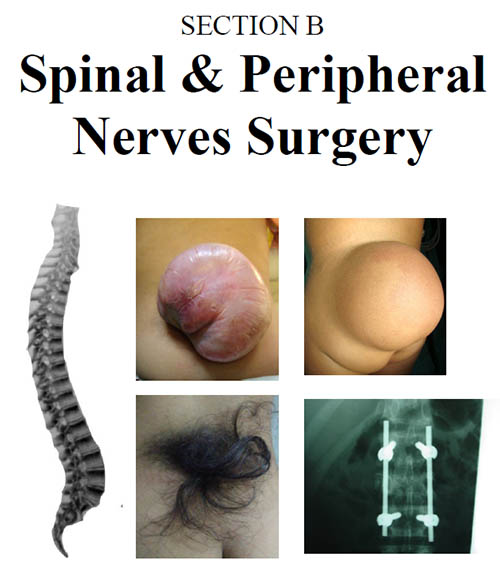Frequency of Discitis in Lumbar Discectomy Patients: A Two Year Study
DOI:
https://doi.org/10.36552/pjns.v23i4.389Keywords:
Discitis, lumbosacral prolapsed intervertebral disc, Post op disc surgery infectionAbstract
Objective: Aim of conducting the study was to evaluate the incidence of post op discitis in lumbo-sacral disc surgeries.
Materials and Methods: This observational prospective study was carried out in Neurosurgery unit Hayatabad Medical Complex, Peshawar for 12 months (1st July 2017– 30thJune 2019).A total of 250 patients operated for lumbar disc surgeries were enrolled in the study, both genders and age range of 16-60 were in inclusion criteria.Patients with co-morbidities e.g., poorly controlled diabetics and immunosuppressed patients were excluded from the study. All patients were followed to calculate the frequency of discitis. Results: Among the 250 cases, 11 (4.4%) were diagnosed with discitis. 15% cases had slight sign and symptoms, pain and surgical scar tenderness not warranting the diagnosis of discitis. The mean age in this study was 37 years with Standard Deviation of 13.769. Male cases were 133 (53.2%) while females were 117 (46.8%). Discitis was more common at L4-5.
Conclusion: From this data it was concluded that incidence of discitis is slightly higher in our setup than international discitis incidence/rates. The possible reason could be (to some extent) due to inefficient/poorly resourced infection prevention committee and partly due to less standardized OT system in comparison to international OT complex standards.
References
427–33.
2. Li j, yan D, Duan L, Zhang Z, Zhu H, Zhang Z. Percutaneous discectomy and drainage for post operative intervertebral discitis. Arch Orthop trauma Surg. 2011; 131: 173-78.
3. Hamdan AT. Postoperative disc space infection after discectomy: A report on thirty-five patients. Int Orthop. 2012; 36 (2): 445–50.
4. Sharafat S, khan Z, Ali M, Azam M, Aman M. Management of post operative discitis after lumber discectomy. KJMS. 2014; 7 (1): 80-2.
5. Sheha AF. Surgical management of post-discectomy spondylodiscitis with transforaminal lumbar interbody fusion (TLIF) and posterior instrumentation. Life Sci J. 2011; 8 (4): 140-42.
6. Moon MS. Kim SS, Lee BJ, Moon JL, Sihn JC, Moon SI. Pyogenic discitis following discectomy. J Orthop Sug Res. 2012; 20 (1): 11-7.
7. Ibe MON. Surgically treated symptomatic prolapsed lumbar and sacral intervertebral discs in females: a comparative study of incidence and causative factors and treatment. Nigerian Journal of Surgery, Jul-Dec 2012; 18 (2): 61-7.
8. Nasto LA Colangalo D, B. Rossi B, Fantoni M, Pola E. Post-operative spondylodiscitis. Eur. Rev. Med. Pharmacol. Sci. 2012; 16 (2): and drainage of Infective lumbar spondylodiscitis: technique and clinical results. Clin Orthop Surg. 2012; 4 (3): 200–8.
9. Gregory DS, Seto CK, Wortley GC, Shugart CM. Acute lumbar disk pain: navigating evaluation and treatment choices. Am Fam Physician, 2008 Oct. 1; 78 (7): 835-42.
10. Khattak A, Haider A, Rehman L, Mushtaq L. Surgical outcome of recurrent lumbar disc herniation: experience with 30 patients. JPMA. 2009; 23: 86-89.
11. Jolles BM, Porchet F, Theumann N. Surgical treatment of lumbar spinal stenosis. J Bone Joint Surg Br. 2001; 83-B (7): 949-53.
12. Wajsfisz A, Rillardon L, Jameson R, Drain O, Guigui P. Efficacy of repeated radicular release for the treatment of recurrent discal herniation. J Bone Joint Surg Br. 2005; 90-B, SUPPIII: 235.

Downloads
Published
Issue
Section
License
The work published by PJNS is licensed under a Creative Commons Attribution-NonCommercial 4.0 International (CC BY-NC 4.0). Copyrights on any open access article published by Pakistan Journal of Neurological Surgery are retained by the author(s).












